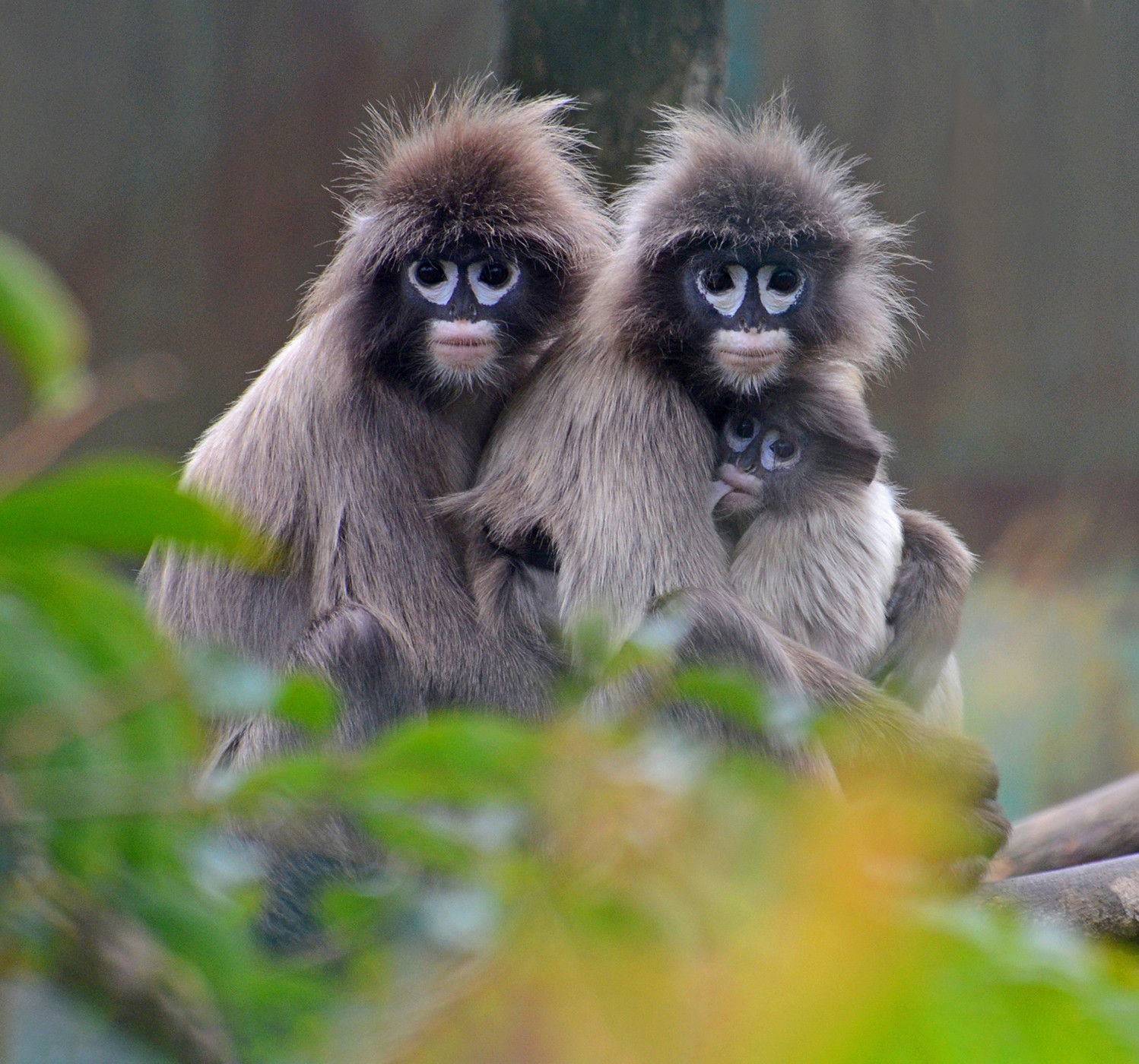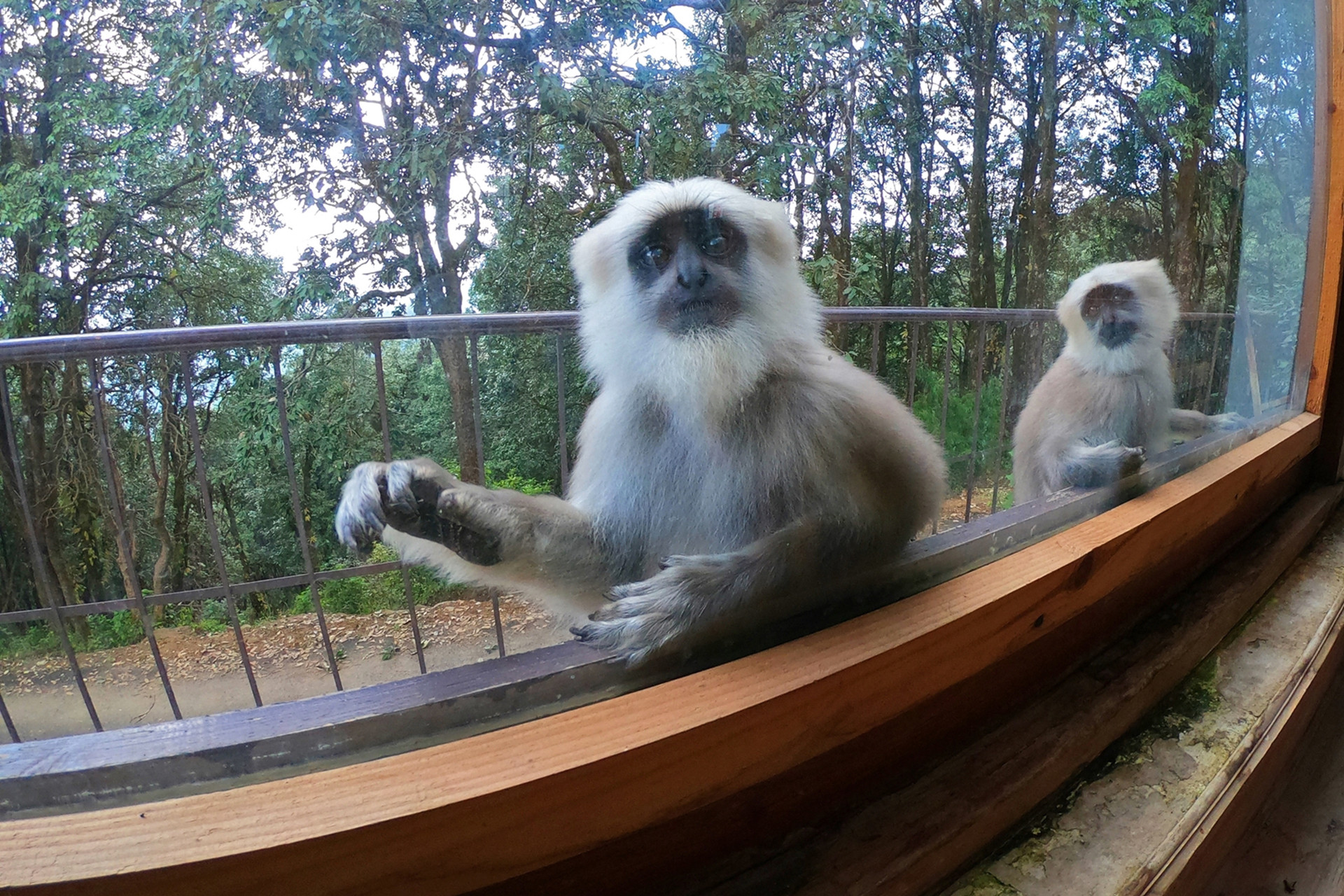For India's primates, home once meant vast, uninterrupted stretches of evergreen forests with access to native plants and trees for food. The country's northeast region, a biodiversity hotspot, prides itself in providing the right environment for primates and boasts the highest primate diversity in the country. Sadly, many of them no longer have the freedom of nature's bounty. Their habitats are fast decreasing, and they are holding onto what is left in hopes of survival. Loss of land and depletion of food sources have limited many of the primate species to fragmented patches. They have had to alter their diets as plantations have taken over their homes and are now exposed to conflict situations as agricultural lands and developmental projects become their next-door neighbours. There are about 15 species of Indian primates of which the Rhesus Macaque and the Gray Langur are widely distributed. While several others face grave threats, it is difficult to comprehend the true nature of their conservation status due to the lack of distribution data.
Through this story, we would like to share the trials and tribulations of some of the endangered primates of our country. Many of the primate species are protected under the Wildlife (Protection) Act of 1971. However, lack of awareness often leads to primates being killed for food, perceived medicinal benefits or in retaliation for crop damage. Beyond secure habitats, primates need compassion and a better understanding of their threats so that communities can be involved in safeguarding them.
Western Hoolock Gibbon (Hoolock hoolock)
IUCN Redlist Status: Endangered
The only ape species found in the Indian subcontinent, Hoolock Gibbons are further classified into Western and Eastern Hoolock Gibbons, depending on their range. Western Hoolock Gibbons are found throughout northeast India, in regions between the south of the Brahmaputra river and east of Dibang river where they reside in forests. Along with habitat loss and human interference of their habitats, the gibbons are also hunted for food or perceived medicinal benefits.
The Hoollongapar Gibbon Sanctuary in Jorhat district, Assam is the place to visit if you want to see the Western Hoolock Gibbon. Here is a travel guide to help you plan a trip.
Arunachal Macaque (Macaca munzala)
IUCN Redlist Status: Endangered
The Arunachal Macaque is seen in parts of western Arunachal Pradesh. They were first discovered in 2005 by researchers at the Nature Conservation Foundation and are known to exist in broad-leaf forests near human-occupied spaces in the state. They reside in altitudes between 6,500 and 11,500 feet, making them one of the highest-dwelling macaques in India. They are also possibly present in Bhutan and Tibet. Their habitats have been vastly altered, and the plant-eating primates are sometimes seen foraging for food in agricultural lands. The biggest threat to this species is hunting and trapping. They are sometimes killed in retaliation for feeding on crops.
Lion-tailed Macaque (Macaca silenus)
IUCN Redlist Status: Endangered
Endemic to the Western Ghats, Lion-tailed Macaques prefer to live in the canopy of tropical evergreen rainforests. These small-sized macaques can survive across altitudes and are seen building abodes between 330 and 6000 feet. They are highly dependent on fig trees for sustenance, and fruits form a major part of their diet. They also feed on flowers, shoots, insects, frogs and bird eggs. But with increased habitat fragmentation and forest degradation, they are forced to come down to the ground and look for food. This makes them vulnerable to roadkills and susceptible to diseases transmitted from discarded food, which adds to the threat of habitat loss.
Read this quick listicle to learn everything you need to know about the Lion-tailed Macaque.
Phayre's Leaf Monkey (Trachypithecus phayrei)
IUCN Redlist Status: Endangered
Identified by the distinct white rings around their eyes, Phayre’s Leaf Monkeys were once found throughout the northeastern part of India and in parts of Thailand, Vietnam, Bangladesh and China. Due to habitat loss, they are now seen in fragmented patches in the states of Assam, Mizoram and Tripura. Leaves form a main part of their diet, and they prefer evergreen and semi-evergreen forests as habitats. As plantations take over their habitats, they are now dependent on non-native species of plants and trees for subsistence.
Kashmir Gray Langur (Semnopithecus ajax)
IUCN Redlist Status: Endangered
Also known as the Himalayan Gray Langur, the Kashmir Gray Langur is one of the least studied langur species. They are endemic to the western Himalayas, where they are now present within a 500km range in the Chamba district. The leaf-eating langurs are also known to source food from the agricultural lands during harvest season, receding into the forests the rest of the time. Apart from habitat degradation, alteration by developmental activities like hydropower projects and other conflict situations are adding to their threats.
Gee’s Golden Langur (Trachypithecus geei)
IUCN Redlist Status: Endangered
The primate is found in Western Assam and the neighbouring country of Bhutan and is considered sacred by many people. Gee’s Golden Langurs need moist evergreen and riverine forests for survival. They usually sport cream-coloured coats, but as soon as the sunlight falls on them, they exhibit a golden hue earning them the name of Golden Langur. Like many other primates, they are leaf-eaters. Habitat destruction is one of the biggest threats to this species, restricting their populations to fragmented regions within their habitats. Most of these primates live outside protected areas where roadkills and electrocution by live wires are constant threats.
Read about how Indigenous communities have played a major role in conserving the rare, endangered Golden Langur, here.
Bengal Slow Loris (Nycticebus bengalensis)
IUCN Redlist Status: Endangered
Bengal Slow Lorises are shy and nocturnal animals that reside in the forest patches of northeast India. The arboreal slow loris prefers trees that release sap. They feed on sap, nectar, bark, fruits and small invertebrates. Over the last three decades, their population has reduced by 50 per cent owing to habitat loss. Conversion of forest area to agricultural land and destruction for developmental projects have greatly contributed to the species’ decline. Added to that, illegal pet trade is also a significant threat for them.








